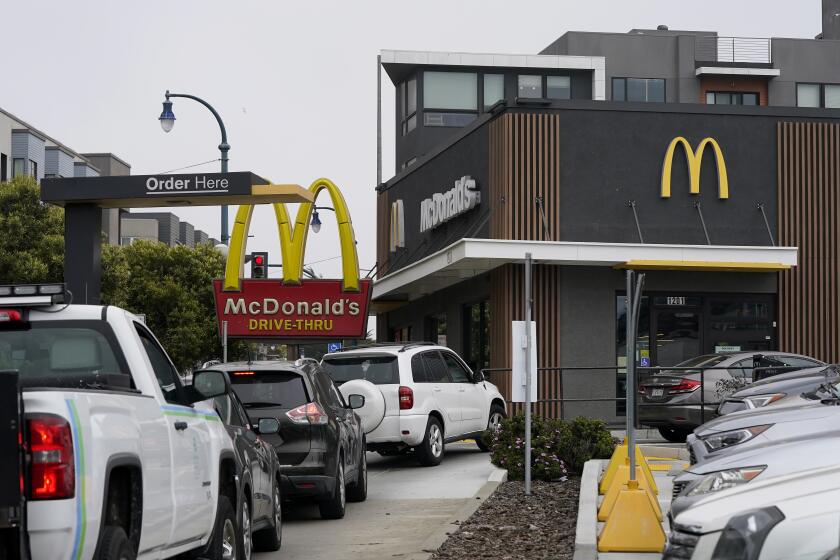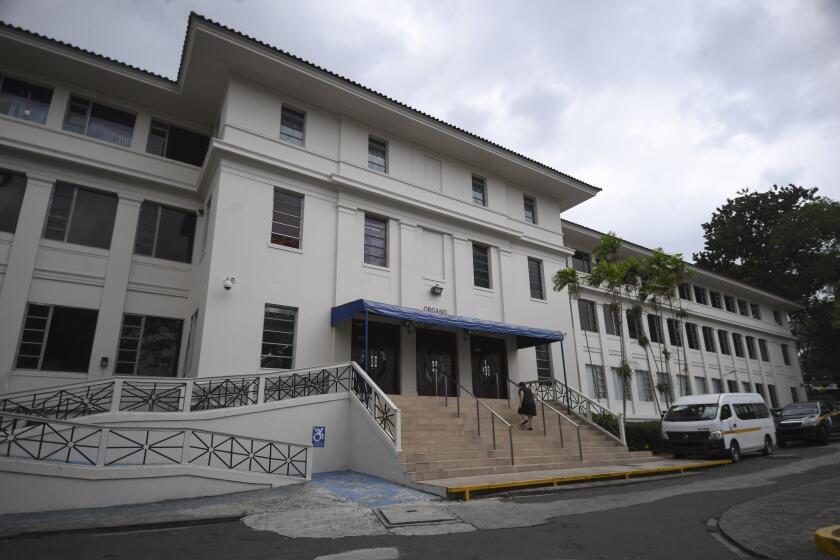San Diego inflation stays high at 7.9%. Here’s what’s costing you more

The cost to buy almost everything has increased, especially gasoline and food.
San Diego’s inflation rate hit one of its highest points in the last 40 years in March but was down slightly from the start of the year.
The inflation rate for the San Diego metro area — which includes all of San Diego County — was 7.9 percent in March, said data released Tuesday by the U.S. Bureau of Labor Statistics’ Consumer Price Index. It was down from 8.2 percent in the bureau’s last report for January.
This story is for subscribers
We offer subscribers exclusive access to our best journalism.
Thank you for your support.
San Diego County’s rate was lower than the national average of 8.5 percent. While it may be tempting to think inflation is slowing in America’s Finest City, it is more likely the rest of the nation is catching up to Southern California — where inflation started rising sharply before most of the nation. For instance, in October, San Diego’s inflation rate was 6.5 percent and one of the highest in the country while cities like Chicago, Boston and Denver were still around 4 percent.
Ray Major, chief economist at the San Diego Association of Governments, said it is important to remember monthly changes in inflation are not seasonally adjusted and there isn’t a lot to write home about regarding a slight dip in the local rate.
“You have to go back to the 1980s to see these type of numbers,” he said. “This is not getting better any time soon.”
Of the 12 metros surveyed by the BLS, San Diego had the seventh-highest inflation rate. Tampa was No. 1 with a rate of 10.2 percent, followed by Riverside at 10 percent. New York had the lowest at 6.1 percent.
From January to March, prices were down in a few key areas in San Diego County. Food at restaurants was down 1.5 percent in the two-month period, household energy costs were down 2.5 percent and meats, poultry, fish, and eggs were down 0.4 percent.
On an annual basis, things look much rougher for San Diegans. These are the areas where prices have gone up the most across San Diego County:
- Motor fuel: The price for unleaded regular is up 47.2 percent; unleaded midgrade, 44.2 percent; and 43.6 for unleaded premium.
- Food: Cereals and bakery products are up 14.2 percent; Dairy, up 9.7 percent; Fruits and vegetables, up 9.4 percent; and meats, poultry, fish, and eggs up 6.7 percent.
- Housing: Overall shelter costs, including rent and owners’ cost, were up 6.2 percent.
- Private transportation costs, which include automobile maintenance, vehicle parts and car insurance, were up 22 percent.
- Tuition, school fees and childcare were up 3.5 percent.
Across the nation, the South has had the biggest annual inflation jump at 9.1 percent, outpacing the Northeast (7.3 percent), West (8.7 percent) and Midwest (8.6 percent).
Major said a big takeaway from recent numbers is that inflation is not transitory, as members of the Biden administration and Federal Reserve officials had originally predicted. Fed Chairman Jerome Powell had said in summer 2021 that he thought supply-chain bottlenecks were the result of quickly reopening the economy and inflation would slow to end the year.
Major said a large factor is stimulus money that made a significant gain to household income and infused the economy with trillions of more dollars, adding to supply shortages as people were eager to spend. Using data from several federal sources and the state Franchise tax board, he said that people in the bottom quartile of earners — earning $28,000 annually — saw household income increase 79 percent over two years. This includes money from child tax credits and stimulus payments given out in 2020 and 2021.
Influential economist Charles Goodhart, former U.K. central banker, recently got the attention of many financial analysts for his prediction inflation would stay high — roughly 3 percent to 4 percent — for decades.
He said COVID-19 issues just sped up what he predicted would happen anyway: Inexpensive labor that kept prices and wages down since the 1990s would end because of a persistent era of worker shortages. Reasons include lower birth rates and loss of cheap labor in China and Eastern Europe.
When volatile food and energy costs are removed from the overall inflation rate, San Diego County had a 5.6 percent increase from March 2021 to March 2022.
The region has lived through high inflation before. Some high points in San Diego County history were 11 percent in 1974; 13.5 percent in 1981; and 6 percent in 1990.
* * *
Inflation rates for metro areas
Annual percentage increase from the U.S. Bureau of Labor Statistics’ Consumer Price Index
Tampa-St. Petersburg-Clearwater, FL: 10.2 percent
Riverside-San Bernardino-Ontario, CA: 10 percent
Denver-Aurora-Lakewood, CO: 9.1 percent
Dallas-Fort Worth-Arlington, TX: 9 percent
Los Angeles-Long Beach-Anaheim, CA: 8.5 percent
Minneapolis-St.Paul-Bloomington, MN-WI: 8.2 percent
San Diego-Carlsbad, CA: 7.9 percent
Chicago-Naperville-Elgin, IL-IN-WI: 7.8 percent
Urban Hawaii: 7.5 percent
Boston-Cambridge-Newton, MA-NH: 7.3 percent
Washington-Arlington-Alexandria, DC-VA-MD-WV: 7.3 percent
New York-Newark-Jersey City, NY-NJ-PA: 6.1 percent
Get U-T Business in your inbox on Mondays
Get ready for your week with the week’s top business stories from San Diego and California, in your inbox Monday mornings.
You may occasionally receive promotional content from the San Diego Union-Tribune.










